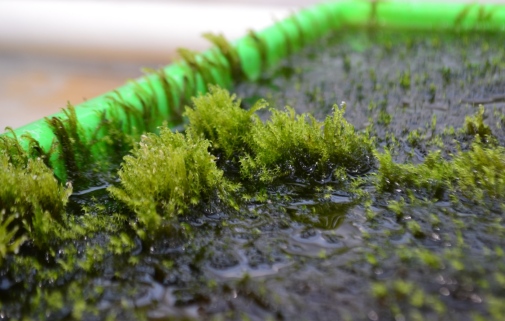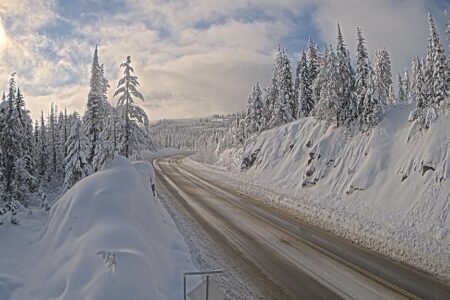An aquatic moss can remove arsenic from water
Parts of Rossland are known to contain higher-than-average naturally occurring levels of arsenic. Arsenic is widely recognized as poisonous, as shown in such entertainments as “Arsenic and Old Lace” — a play written in 1939, and made into a movie in 1944, starring Cary Grant — and in a number of whodunnit crime novels. For serious information on arsenic’s toxicity, see the World Health Organization’s fact sheet on arsenic here. Long-term exposure can result in various types of cancer and other health problems.
Rossland’s drinking water is safe, but other parts of the world with elevated levels of naturally occurring arsenic, or levels of arsenic elevated by nearby mining activities, are not so fortunate. Yellowknife has an arsenic pollution problem in nearby lakes, from the Giant mine, and residents have been concerned about the source of Yellowknife’s drinking water — which has been tested and found to be safe.
Parts of northern Sweden have problems with arsenic pollution of water bodies used as sources of domestic water, so a recent discovery by researchers at the University of Stockholm has stirred interest there and around the world. The discovery: a type of aquatic moss that absorbs arsenic from water. Here’s the press release from the university:
A moss capable of removing arsenic from contaminated water has been discovered by researchers from Stockholm University. And it happens quickly – in just one hour, the arsenic level is so low that the water is no longer harmful for people to drink. The study has been published in the journal Environmental Pollution.
The aquatic moss Warnstorfia fluitans, which grows in northern Sweden, has the ability to quickly absorb and adsorb arsenic from water. The discovery allows for an environmentally friendly way to purify water of arsenic. One possible scenario is to grow the moss in streams and other watercourses with high levels of arsenic.
Water in mining areas often contaminated
In the northern part of Sweden, water from mining areas is often contaminated by arsenic.
“We hope that the plant-based wetland system that we are developing will solve the arsenic problem in Sweden’s northern mining areas,” says Maria Greger, associate professor at the Department of Ecology, Environment and Plant Sciences at Stockholm University and leader of the research group.
High capacity for quick uptake of arsenic
“Our experiments show that the moss has a very high capacity to remove arsenic. It takes no more than an hour to remove 80 per cent of the arsenic from a container of water. By then, the water has reached such a low level of arsenic that it is no longer harmful to people,” says research assistant Arifin Sandhi, who has conducted the experiments.
In 2004, the use of arsenic compounds in wood products was banned, but arsenic still reaches ground and water systems due to mining. This happens because the ground and bedrock in certain parts of Sweden naturally contain arsenic. As a result, the drinking water and water used for the irrigation of crops also contains elevated levels of arsenic. The plants absorb the arsenic from the soil, and it eventually ends up in the food that we eat. In Sweden, this applies to wheat, root vegetables, leafy greens, etc. In other countries, there are high levels in rice, for example.
“How much arsenic we consume ultimately depends on how much of these foods we eat, as well as how and where they were grown. Our aim is that the plant-based wetland system we are developing will filter out the arsenic before the water becomes drinking water and irrigation water. That way, the arsenic will not make it into our food,” says Maria Greger.
The article, Phytofiltration of arsenic by aquatic moss (Warnstorfia fluitans), is available to read here: http://www.sciencedirect.com/science/article/pii/S026974911731206X
Warnstorfia fluitans is also native to large areas of Canada.
























